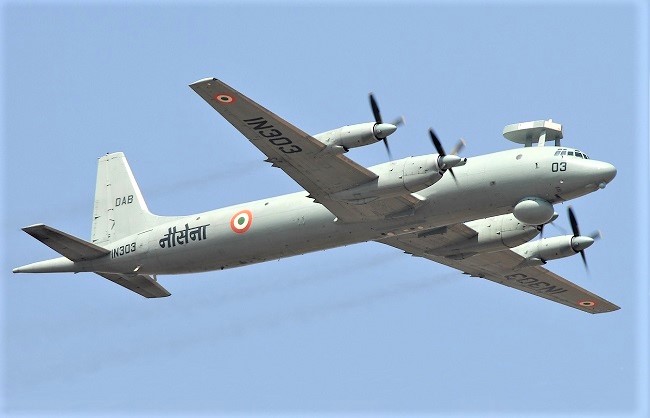New Delhi, March 12: Indigenous with parachute system from Indian Navy maritime patrol aircraft Ilushin Il-38 (Dolphin), the first flight test of the Advanced Light Torpedo has been successfully done.
It has been developed by the Naval Science and Technological Laboratory (NSTL). Torpedo Advanced Light (TAL) is an electrically powered self-homing torpedo and can be launched from ships and rotary wing aircraft.
However, earlier this torpedo has been tested with helicopters, ships and submarines. This naval maritime patrol aircraft will be equipped with supersonic BrahMos, KH35 and indigenous torpedoes. It will be difficult for the enemy to escape.
The Russian company aircraft Ilushin Il-38 is also known as ‘Dolphin’. It is a long-range fixed wing maritime patrol and anti-submarine warfare aircraft. The aircraft was designed from the Ilushin Il-38 turboprop transport aircraft in the Soviet Union. NATO calls this aircraft “May”.
The Indian Navy currently operates 2 units of these airplanes while 5 units were acquired from the Soviet Union in 1977. The Indian version of the aircraft has the capability to carry ‘Sea Eagle’ anti-ship missiles. This medium-weight 580 kg anti-ship missile is designed and manufactured by BAE Dynamics (now MBDA).
Apart from the Sea Eagle, a Kh-35 anti-ship missile from Dolphin aircraft and India’s most powerful supersonic BrahMos missile can also be launched.
The Advanced Light Torpedo, developed by the Naval Science and Technological Laboratory (NSTL), is one of the finest light torpedoes in the world today. Torpedoes are safely landed by dolphin marine patrol aircraft with the help of parachutes. The torpedo is activated as it enters sea water. The torpedo release system is able to continue its operation in the water by descending from the parachute. The parachute is designed by the Air Distribution Research and Development Establishment of Agra.
This torpedo can track multiple targets simultaneously using state-of-the-art processor-based signal processing algorithms. The operational range of 220 kg torpedoes is 19 km. And it can travel with a speed of 33 knots. It can operate up to a depth of 540 meters in all electric propulsion. Advance light torpedoes can destroy targets in about 6 minutes when launched.
The Indian Ocean region remains a major challenge for the Indian Navy after rising tensions with China. The Chinese Navy’s submarine fleet is growing rapidly simultaneously. Therefore, there is a need to continuously develop anti-submarine systems of the Navy. The Indian Navy already operates 9 Boeing P8i-Neptune aircraft. The aircraft is capable of anti-submarine warfare, anti-surface warfare and shipping interduction roles.
Apart from this, India has to get 9 more aircraft. Although the P8-i is equipped with a state-of-the-art system but cannot carry BrahMos and indigenous torpedoes, the Illushin Il-38’s fleet with state-of-the-art sensors and equipment will strengthen the Indian Navy.





